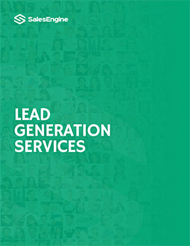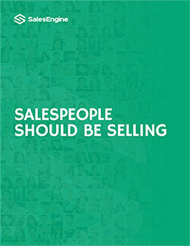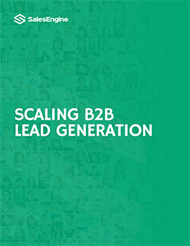Category:
Insights on Improving Lead Generation
| 0 It is important to find the most scalable and effective channels available for your company’s lead generation campaigns.
It is important to find the most scalable and effective channels available for your company’s lead generation campaigns.
Lead Quality
Not all leads are created equal. Depending on the channel and targeting, leads may or may not meet the qualification criteria established by the sales team. This is often the case with inbound lead generation and it is the primary reason for the distinction between marketing qualified leads (MQLs) and sales qualified leads (SQLs).
If lots of leads are coming from white papers, eBooks, case studies or other types of lead magnets, it is important to understand whether or not they are worth your sales team’s time.
For example, companies offering a free sample or report might get a lot of companies signing up that can’t afford their product/service or is too small to get a good return on investment. These leads (MQLs) do not meet your qualification criteria and clogs your sales pipeline with low-value leads. This wastes your sales team’s time while hurts their ability to hit quota.
Lead Generation Costs
Scaling your lead generation channels can require a big investment, including time, money and additional team members. With the right technology, lead generation can be scaled in a way that decreases the cost per lead at scale. However, most traditional approaches to lead generation either require a large upfront investment or causes costs to scale in parallel with the volume of leads generated.
Prospecting
Many companies today are providing tools that help sales development reps or prospectors build lead lists with contact information. They require team members to do repetitive, manual tasks that consumes lots of time and are incredibly repetitive.
Worst of all, scaling lead generation often requires on-boarding more team members. Instead of having additional resources to bring on more salespeople to close leads, manual prospecting consumes time, money and doesn’t scale exponentially.
Partnering
An alternative to building a prospecting team is partnering with a company that specializes in lead generation and prospecting. This can be a better approach because it keeps your team focused on pitching leads and closing deals instead of prospecting for leads. However, it can be challenging to find a lead generation partner that can provide you with a sustainable, scalable supply of qualified sales leads.
Data Providers
Instead of prospecting or partnering with a lead generation service, you can look at using a data provider. Databases containing the sales intel and contact information of millions of companies and employees can be a valuable asset to scaling lead generation.
It is important to ensure that the data provider has high-quality, updated data and consider how many other companies are using the same data provider. If you are one of hundreds of companies reaching out to the same contacts, your campaigns will be less effective and deliver sub par results.
An additional challenge of using data providers is the cost. Most high-quality data providers that can provide very targeted leads are expensive. They also tend to refuse giving big discounts for increases in overall lead volume, resulting in cost issues when trying to scale aggressively.
Performance Improvements
One of the most cost-effective methods to scale your lead generation is improving lead generation performance of your lead generation. Small changes and quick experiments can lead to big wins. This helps you save money, time and the headache of big changes in your overall lead generation strategy as you scale.
Data Analysis
To successfully improve your lead generation and sales processes, implement systems and methods to collect and measure their performance. Talk with your team and monitor the data to identify challenges when they emerge.
Develop a clear roadmap and focus your experiments and efforts towards improving performance. Keep good lines of open communication with your team to ensure they are sharing feedback, difficulties and insights to help prepare your team to scale.
Comparing Performance
A very common pitfall with reviewing lead generation data is comparing apples to apples when doing quantitative and qualitative analysis. Two versions of a lead generation campaign might show significant differences in their performance, but if they are targeting different company segments and roles, then comparing them becomes difficult or even arbitrary. Focus on comparing data from similar targeting criteria to ensure that your insights are accurate and valuable.



